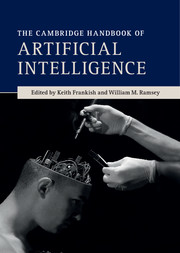4 - GOFAI
Published online by Cambridge University Press: 05 July 2014
Summary
Introduction
Good Old-Fashioned AI – GOFAI, for short – is a label used to denote classical, symbolic, AI. The term “AI” is sometimes used to mean only GOFAI, but that is a mistake. AI also includes other approaches, such as connectionism (of which there are several varieties: see Chapter 5), evolutionary programming, and situated and evolutionary robotics. Indeed, most work in artificial life (A-Life) falls within AI broadly defined, despite A-Lifers’ tendency to distance themselves from it (see Chapter 14). Here, however, we are concerned with symbolic AI alone.
Both technological and psychological AI employ the full range of AI methodologies, GOFAI included. But they are driven by different motivations. The goal of the former is to build useful computer systems, doing, or assisting with, tasks that humans want done. The goal of the latter – which can also be called computational psychology – is to develop explanatory theories of mind. Sometimes (according to “strong” AI: see Section 4.4), it also aims to build computer systems that are genuinely intelligent in themselves. Accordingly, psychological AI is the more likely to raise questions of interest for the philosophy of mind.
Keywords
Information
- Type
- Chapter
- Information
- The Cambridge Handbook of Artificial Intelligence , pp. 89 - 107Publisher: Cambridge University PressPrint publication year: 2014
References
Accessibility standard: Unknown
Why this information is here
This section outlines the accessibility features of this content - including support for screen readers, full keyboard navigation and high-contrast display options. This may not be relevant for you.Accessibility Information
- 19
- Cited by
